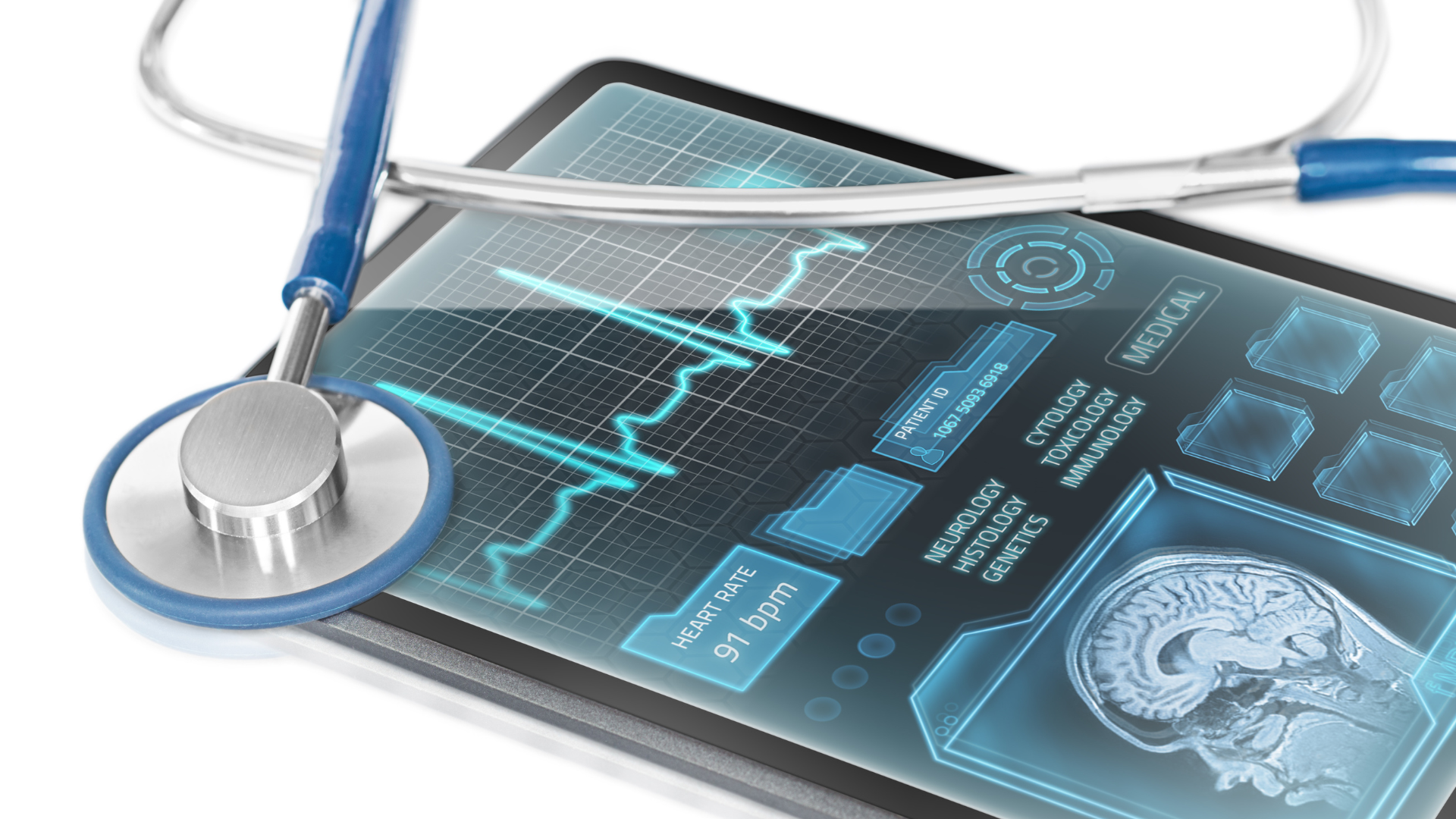Healthcare IT Strategy for 2022
Understanding the importance of technology in healthcare is essential to competitiveness. You can no longer afford to operate your practice with outdated systems.
As technology continues to evolve in our increasingly digital world, traditional ways of delivering health care will become increasingly outdated.
You need to be at the forefront of new technology to provide your patients with faster and more efficient service while lowering your costs. This will position you as an expert in your region who can give tailored care to your patients based on their unique needs.
Take a step back and evaluate your current IT strategy to ensure that your practice is on top of the latest technological trends ahead of the competition.
2022 Trends and Predictions in Healthcare: Why You Need a Strategic Plan
There is an increasing rate of change in the healthcare climate. It’s important to consider the changing needs of the patient and their family, while also considering changes in healthcare delivery and more.
Strategic IT planning is essential in an industry that undergoes rapid change. Healthcare is undergoing significant and rapid changes due to technological advancements. In the next few years, physicians who continue to practice as they have will find that they are increasingly at a disadvantage as these changes accelerate.
A good strategic IT plan should include an examination of how technology can be used to improve patient experience, optimize practice operations, and provide better financial returns.
Transform Your Medical Practice for 2022
Adapting to new technologies is the key to medical clinics' success in this digital age. Listed below are a few points you may want to consider incorporating into your practice to stay competitive:
Invest in New Technology and Let Go of Outdated Ones
Many clinics in the U.S. will not be able to upgrade their computers in the next couple of years due to its high cost and the lack of available funding. This is a problem because not only are outdated IT systems also costly, they end up being inefficient, and unsecure for both clinicians and patients.
If your computers are over 4 years old or still running Windows 7 or 8, upgrading is a must. Your office will be out of compliance and suffer from poor performance if you delay your hardware upgrade.
Upgrading your computers also has the potential to increase efficiency, reduce risks, and improve data management capabilities.
Additionally, investing in state-of-the-art managed firewalls will not only enhance your clinic's security, but will also lower your costs and make your in-house IT staff's life easier.
You should also upgrade outdated phone systems and other devices that hackers can easily breach.
Incorporate Artificial Intelligence (AI)
The future of medicine is already here. AI is revolutionizing healthcare and changing the way doctors practice medicine. AI is being used to analyze the effectiveness of new drugs, making it easier for doctors to prescribe them to patients that they know will respond well to them.
It’s also being used in analyzing medical images, which helps doctors make better-informed decisions about their patients.
AI has also been shown to be valuable in dictating patient care plans for hospitals and clinics by identifying at-risk patients and predicting which ones are likely to suffer from complications or reoccurring conditions.
Basically, AI is used to enhance rather than replace the knowledge of a clinician. Israeli startup Aidoc, for instance, uses AI to help radiologists spot visual abnormalities when examining CT scans and other medical images.
AI-enabled medical imaging solutions are projected to grow from $404 million in 2018 to
$9.61 billion in 2029.
AI-powered cybersecurity solutions are also helping medical practices stay ahead of ransomware and other malicious threats.
Medical practices are under constant threat by cybercriminals. Ransomware can cripple your clinic's entire network, forcing you to stop seeing patients while you wait to get back up and running.
Choosing a cybersecurity solution that offers robust, cloud-based cybersecurity solutions can help you manage prevention policies, generate reporting data, and take immediate action when cyber threats emerge.
Embrace Telehealth and Virtual Care Technology
Virtual care is a great way to provide same-day healthcare, reduce wait times, and allow physicians to spend more time with patients.
Doctors and other medical professionals can use virtual care technology to provide patients with the access they need without coming in for an office visit. In some instances, doctors can reduce unproductive visits by diagnosing conditions faster at a distance than if the patient came into the clinic.
The more you explore the possibilities of telehealth, the more you will realize that it is a crucial part of your medical practice. Not only does it offer a new way for patients to interact with their doctors and specialists from any location, but it also has many benefits for those who are recovering from an injury or have disabilities.
Virtual care technology is designed to deliver cost-effective solutions while maintaining a high quality of care for patients.
Maintain Secure Connections as Telehealth Becomes More Prevalent
The COVID-19 pandemic forced practitioners and patients alike to become accustomed to telehealth. Even as we return to our normal routines, telehealth usage is projected to grow exponentially. This is due to its cost-effectiveness and accessibility for patients.
Telehealth bypasses geographic limitations and allows for more convenient appointment times. It also provides a lower barrier to access for underserved populations who may not otherwise have access to a medical provider.
However, security remains a challenge for this emerging care delivery model. The increased use of unsecured connections raises concerns about data security. If we intend to keep our telehealth methods effective, it is vital to maintain secure connections.
For example, rather than using regular consumer video conferencing software, you and your staff should make use of a HIPAA-compliant tool that protects patient data more effectively.
Your telephony solution should include integrated security controls designed to safeguard patient-doctor conversations. Security and performance should be sufficient to deal with the traffic volume that telemedicine initiatives will inevitably create.
Train Your Entire Staff on Cybersecurity
The fact that 95% of data breaches are caused by human error makes cybersecurity critical to all of your employees, not just IT personnel. Cyber attacks can lead to stolen patient information, compromised personal health records, and hampered hospital operations.
As the threat level grows, it’s more important than ever for your entire staff to be educated on cybersecurity. Here are some guidelines to follow:
- Ensure that your staff is aware of the risks they face when working on computers on clinic premises and through remote access locations.
- Conduct regular training sessions.
- Hold security awareness campaigns.
- Create procedures for managing sensitive data.
Have a Business Continuity Plan
Any medical practice is at risk of facing a disaster, whether it is natural or man-made. You need to have a plan to ensure that your business will be able to continue operating after the disaster.
Business continuity planning consists of many aspects. Data backup is arguably the most critical. Backup of your data enables you to protect your files and documents from being lost during a disaster. You need to make sure that your patients’ data is backed up and stored remotely so that you can get them back instantly if anything should happen to your practice.
You must also ensure that the cloud-based data storage provider has a proven track record of delivering 99.9% uptime with full 24/7 client support available 365 days a year and tried-and-tested experience in providing services to healthcare practices like yours.
Transform Virtual Care From Obstacle to Advantage
It’s not uncommon for people who need remote healthcare to experience inconvenience or discomfort during the conversation. Virtual care must reduce these feelings by making the experience more personal.
Caregivers need to build trust with their patients to continue using this service over others in the future. However, there is a growing concern that virtual care will create poor patient experience.
There are many ways that your medical clinic can improve your patients’ virtual care experience. They can use touch-enabled screens, interactive videos, and virtual reality (VR) headsets to make the experience feel more immersive.
Your patients can also use these technologies to conduct medical exams by linking them with the patient's
electronic health records (EHR) or telemedicine solutions.
Some of these virtual care experiences can be improved with just one simple step: making sure that the patient feels cared for on a personal level.
Provide your patients with treatment plans that are highly personalized for them and their needs. This way, they will feel the human element involved in their care.
Reduce waiting time for appointments by making sure that your virtual clinic has enough staff available at all times. If you can’t do this, give patients the option to schedule an appointment at a different time so they don't have to wait long periods without any assistance.
New patients will flock to your practice as more and more patients realize how good your virtual care services are.
Strengthen Email Security
Medical practices are increasingly adopting remote and hybrid work environments to provide patients with more flexible care. Unfortunately, this has resulted in the need for better email security. It’s now much easier than ever before to hack into an organization's network remotely and gain access to sensitive data without physically being there to do it.
Many companies have adopted email security tools for robust data protection and easy integration with existing systems. These tools offer spam filters, anti-virus solutions, and mail encryption.
- Spam filters can block unsolicited emails from reaching the inbox of the user.
- Anti-virus solutions for email scan every incoming message for viruses before it reaches its destination.
- Mail encryption ensures malicious entities cannot intercept that message content as it travels through a network.
Always Be Ready to Pivot
A key piece of a successful business is being flexible and responding quickly to changes in the environment. Disruptors in a given industry can often force a shift in strategic planning.
The threat of disruption can't always be predicted, but it’s a huge advantage to keep an eye on what's going on in your field and be ready to pivot when needed. This includes keeping up with new technology developments, changing consumer expectations, and the changing business environment.
Technology is constantly evolving, so your medical practice needs to stay on top of new developments to stay in business.
Be Prepared Against New Types of Threats
Cybercrime could resurge next year to levels never seen before. If you don't take steps to boost your cybersecurity and prepare for the latest threats, your preparation for other areas of your practice will be wasted.
Many medical organizations are slow to adopt new technologies, but navigating the IT landscape in healthcare is critical to protect your organization from cyber attacks. This is because cybercriminals are becoming more and more sophisticated in their techniques, and they will take advantage of any technological security vulnerabilities they find.
Consider Patient Engagement Technology to Increase Patient Volume
Involving patients in their self-care is possible with the aid of patient engagement technology. When patients participate in their own healthcare, they gain a deeper understanding of their health conditions and can make informed decisions regarding their health.
Patients have increasingly more options for managing their own care thanks to
patient portals, telehealth, mobile apps, and wearable devices.
By redefining the way providers engage with patients, the entire journey to patient satisfaction can be changed for the better. This can result in
increased patient volume.
Partner With Proactive Healthcare IT Experts
Just imagine what you can accomplish with your practice next year if you only have to focus on your core practice!
A healthcare-centric IT service provider can offer a
wide range of services geared toward improving patient experiences and reducing stress—all while cutting costs.
IT professionals are the ones who make sure that your practice is up to date with the latest medical innovations, systems, and software. If you’re not actively looking for ways to improve your business with technology, then you could be missing out on opportunities to save money or offer better care to patients.
To succeed, a medical practice needs an IT partner that is proactive and understands the complexities of the healthcare industry.
Adapting to Healthcare’s Changing Landscape
While it may take some time and effort to implement a comprehensive IT strategy, the rewards are worth it if you can keep your practice competitive in a highly competitive market. By staying on top of the latest technological trends and taking full advantage of what’s out there to make your practice run smoothly, your practice will be first in line for the best opportunities for success.
ER Tech Pros can help you create an IT strategy that will keep your medical practice competitive and profitable for many years to come. As a first step, we can provide a free evaluation of your entire infrastructure and determine how to develop an IT strategy tailored to fit your specific needs.
Search Articles
Healthcare & Tech Articles

ER Tech Pros is a managed service provider (MSP) that specializes in catering to the IT needs of businesses across the globe. We have offices in Sacramento and the Greater Fresno area.
We use our cutting-edge technology, extensive experience, and global team of technology experts to ensure your IT network is in its most secure and optimal state.
We focus on your IT so you can focus on growing your company.
8795 Folsom Blvd, Ste 205
Sacramento, CA 95826
1501 Howard Rd, Ste 2
Madera, CA 93637
(855) ER-TECH-1 / (855) 378-3241
info@ertech.io
Resources
Search this Site
ERTech Pros | All Rights Reserved.












